Canaux
108470 éléments (108470 non lus) dans 10 canaux
 Actualités
(48730 non lus)
Actualités
(48730 non lus)
 Hoax
(65 non lus)
Hoax
(65 non lus)
 Logiciels
(39066 non lus)
Logiciels
(39066 non lus)
 Sécurité
(1668 non lus)
Sécurité
(1668 non lus)
 Referencement
(18941 non lus)
Referencement
(18941 non lus)
éléments par Phoebe Jennelyn Magdirila
BetaNews.Com
-

Microsoft wants to build a blockchain-based identity solution
Publié: juin 3, 2016, 1:08pm CEST par Phoebe Jennelyn Magdirila
Leveraging on possible opportunities on identity systems, Microsoft is looking into building a blockchain-based identity system and it has recently sealed a partnership to further this goal. The tech giant has made an open source collaboration with companies Blockstack Labs and ConsenSys for their current Bitcoin and Ethereum-based identity solutions, together with various developers globally. Blockchain, while more familiarly used in the cryptocurrency Bitcoin, is a technology that has other uses and can store transaction history of various kinds of records. Through the partnership, Microsoft said it is looking to create an open source, self-sovereign, blockchain-based identity system that allows… [Continue Reading] -

Average salary of IT pros in UK is £40,000 a year
Publié: mai 12, 2016, 4:39pm CEST par Phoebe Jennelyn Magdirila
The average permanent salary of an IT professional in the UK has increased to a record high of around £40,000 per year, according to statistics from CV Screen. The recruitment firm’s analysis shows that London earns the most in all of UK, with an average salary that is 14 percent above the national average. The rise in the national average salary, which marks as the highest average wage for the industry, represents a two percent increase over the last three years. The South East and Thames Valley areas rank as the second and third highest-earning cities among IT professionals, with… [Continue Reading] -

Waze vulnerability allows hackers to track you
Publié: avril 29, 2016, 10:50am CEST par Phoebe Jennelyn Magdirila
Users of Google’s navigation app Waze seem to be at risk of being followed, as a vulnerability in the app could allow hackers to stalk the users of the app in real-time, a group of researchers from the University of California has found. The researchers reverse-engineered Waze’s server code and discovered that thousands of "ghost drivers" could be created on Waze’s systems, which can monitor the real drivers around them. Hackers could even create virtual traffic jams, an exploit to track Waze users in real-time. The hack only works when the app is in the foreground and users can also… [Continue Reading] -

IBM teams up with DocuSign to boost cloud services
Publié: avril 8, 2016, 1:01pm CEST par Phoebe Jennelyn Magdirila
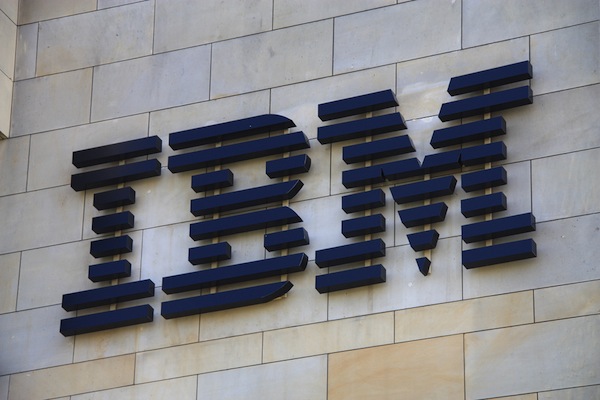
Clients of IBM’s software and services will soon be capable of embedding eSignature and Digital Transaction Management through the IT giant’s new strategic global partnership with DocuSign.
DocuSign is working with IBM Cloud -- with a 47-data center footprint -- to provide customers with access to public, private, and hybrid cloud services. DocuSign’s APIs will also be available through Bluemix, which will be key to embedding eSignature and DTM functionalities within IBM’s Cloud platform.
Many of IBM’s 100 MobileFirst for iOS apps -- such as those for the banking, retail and telco industries -- and users of IBM solutions for human resources and Enterprise Content Management will benefit from the partnership.
IBM also plans to collaborate with DocuSign on a range of Business Process Services solutions aimed to help increase accuracy, speed, and compliance for customers in industries such as home mortgage origination and procurement.
"Cloud offers a way for companies to get started with digital in an agile way, quickly delivering tangible value as they step-up to long-term digital transformation. While companies might be moving assets to the cloud or leveraging near-real time technology to gather insights into what their employees worry about, there is an inherent analog issue when it comes to business processes that require authenticated signatures. This transformation is rapidly changing and through this strategic global partnership, IBM and DocuSign intend to help enterprises accelerate this process", said Inhi Cho Suh, general manager, IBM Collaboration Solutions,
Along with the announcement, DocuSign announced that it has experienced a 125 percent year-over-year customer growth in the DocuSign Global Trust Network, which translates to more than 225,000 companies and more than 85 million users with nearly one million transactions per day.
Published under license from ITProPortal.com, a Net Communities Ltd Publication. All rights reserved.
-

FBI issues warning over MSIL/Samas ransomware
Publié: mars 31, 2016, 2:43am CEST par Phoebe Jennelyn Magdirila

The FBI has began seeking the assistance of companies in the US to streamline its investigation on an increasing ransomware threat in the country.
The FBI is looking into a strain of ransomware called MSIL/Samas, which has been encrypting data across entire networks rather than single computers, Reuters reports. The ransomware infects machines before encrypting data and asking for money in return of the access.
The investigating agency found that the group behind MSIL/Samas used Jexboss, a publicly available security program, to scan for vulnerable versions of the JBoss software, which will be followed by a malware attack on the vulnerable network, according to information Reuters has gathered.
To the dismay of companies, the malware, called Peyta, also finds and deletes the back-up files firms could use to restore data by overwriting a key Windows system file called the Master Boot Record, and includes ransomware variants that use different methods to lock up systems and force victims to pay.
IT firm Cisco said it saw Samas targeting firms involved in healthcare, wherein early versions of the malware charged a ransom of one bitcoin (£300) for every machine hit. This amount was later increased later to 1.5 bitcoins.
Cisco security analyst Nick Biasini said: "It is likely the malware author is trying to see how much people will pay for their files. They even added an option for bulk decryption of 22 bitcoin (£6,600) to decrypt all infected systems".
Published under license from ITProPortal.com, a Net Communities Ltd Publication. All rights reserved.
Photo Credit: bahri altay/Shutterstock
-

Uber announces bug bounty program
Publié: mars 24, 2016, 1:35pm CET par Phoebe Jennelyn Magdirila

Uber is calling on independent computer researchers and experts to find weaknesses in its system as the transportation firm is set to release its technical map.
As Uber jumps into the bug bounty bandwagon -- a philosophy that has long been advocated by the open-source software movement -- it details its software infrastructure to the public, identifies what sorts of data might be exposed inadvertently and suggests what types of flaws are the most likely to be found.
While bug bounty is not a new idea, companies rarely divulge information about their proprietary programming, except to enable third parties to make compatible software.
"That’s a level of confidence that you have not seen too many closed-source software companies take in the past, and I’m really hopeful that others will follow suit", said Alex Rice, chief technology officer at HackerOne, which is managing Uber’s bounty program. The rewards are up to $10,000.
HackerOne, an intermediary between researchers and companies, is only one among many startups that help accelerate efforts to tap the independent security community in identifying serious programming mistakes earlier before cyber criminals attack.
CEO of HackerOne rival Bugcrowd Casey Ellis said that he has also seen a surge in corporate clients asking for private bounty programs.
This shows that the industry has moved into an era where hackers pointing out problems no longer fear arrest, and can even earn modest sums from platforms like HackerOne and BugCrowd and act as "white hats".
Published under license from ITProPortal.com, a Net Communities Ltd Publication. All rights reserved.
Photo credit: NatBasil / Shutterstock
-

One in five Brits blocks ads
Publié: mars 3, 2016, 5:00pm CET par Phoebe Jennelyn Magdirila
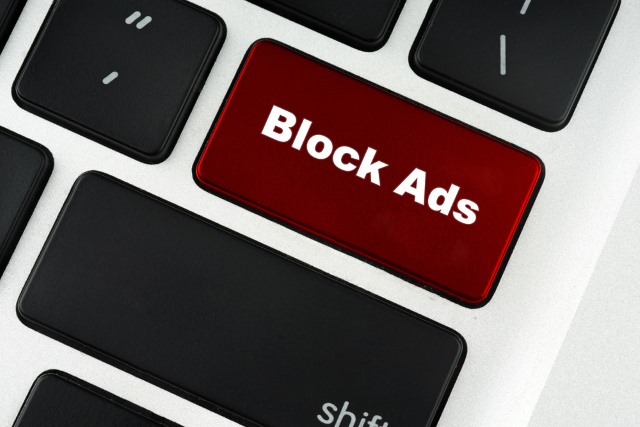
An increasing aversion to online ads amongst British adults is posing a threat to online publishers, new figures show.
The latest figures from IAB in conjunction with YouGov reveal that more than one in five British adults, or 22 percent, are now using ad-blockers, representing a four percent rise compared to previous results in October 2015.
Among the over 2,000 adults involved in the survey, respondents in the 18 to 24 age range show the biggest distaste for ads when browsing the internet, with 47 percent using ad-blockers. Meanwhile, only 16 percent in 45 to 54 year-olds are using ad-blockers.
Apart from the demographic differentiation in the results, another finding from the survey is that nearly two-thirds, or 64 percent, of the respondents who had downloaded ad-blocking software received a notice to turn off their software.
However, over half said that they would only disable their ad-blocker if a website said it was the only way to access content.
"IAB believes that an ad funded internet is essential for providing revenue to publishers so they can continue to make their content, services and applications widely available at little, or no cost. We believe ad blocking undermines this approach and could mean consumers have to pay for content they currently get for free", IAB Chief Executive Guy Philipson said.
Published under license from ITProPortal.com, a Net Communities Ltd Publication. All rights reserved.
Photo credit: Light And Dark Studio / Shutterstock
-

Public cloud services will be a $204bn market in 2016
Publié: janvier 27, 2016, 10:45am CET par Phoebe Jennelyn Magdirila

The public cloud services market will rise in 2016 and is expected to grow its worth to $204 billion (£142bn), up from $175bn (£122bn) in 2015, Gartner has reported.
Gartner research director Sif Nag said that the 16.5 percent increase underscores the huge demand for outsourced cloud services in businesses across all verticals as they convert legacy IT services to cloud-based services "due to the increased trend of organizations pursuing a digital business strategy".
Among public cloud services, infrastructure-as-a-service offerings is forecasted to contribute to the bulk of the growth, with an expected 38 percent increase, or about $22.4 billion (£15.6bn), which is highly-attributed to companies’ goal of cutting down datacenter costs.
"IaaS continues to be the strongest growing segment as enterprises move away from data centre build-outs and move their infrastructure needs to the public cloud", Nag said.
Meanwhile, the biggest area of spending will also be seen in cloud advertising which will account for $90 billion (£62bn) of the market, as firms will be seen to buy ad space on sites, based on user profiles in real-time.
In addition to these, software-as-a-service application, cloud security service and Platform-as-a-service offerings are also expected to grow.
SaaS is expected to attain a 20 percent growth, or $37.7 billion in sales, in 2016; cloud security services will account for $6.2 billion, compared to $5 billion in 2015; and PaaS will account for $4.6 billion, compared to $3.8 billion in 2015.
Published under license from ITProPortal.com, a Net Communities Ltd Publication. All rights reserved.
Photo Credit: Rrraum/Shutterstock
-

BlackBerry will only release Android devices in 2016
Publié: janvier 8, 2016, 11:14am CET par Phoebe Jennelyn Magdirila
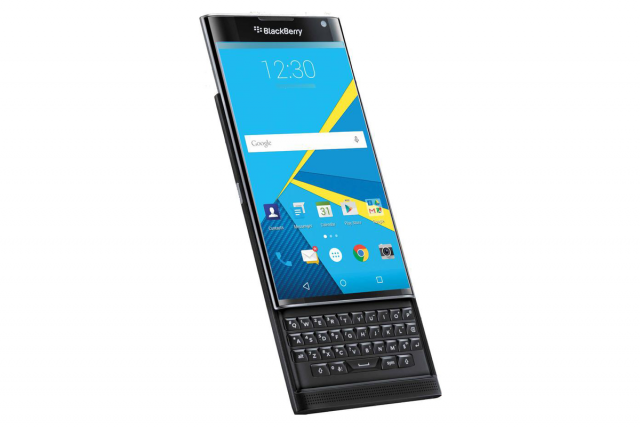
BlackBerry has heralded the new year with a new move -- that is, to shift to Android for its upcoming devices in 2016.
In BlackBerry’s statement, company CEO John Chen said that its BB10 operating system will take a back seat this year as the company intends to launch two Android-powered devices to accompany the BlackBerry Priv.
Nonetheless, the physical keyboard -- a prominent feature among BlackBerry phones -- will likely remain in in the new devices’ form factor to stand out among other Android powered smartphones in the market today.
Chen declined to comment on the expected timing of the phones’ release.
Chen also said that the reception of the BlackBerry Priv has been good so far. "I’m taking a cautiously optimistic view", he adds. The Priv will roll out to 31 countries and with an expected price drop after some time. Priv currently costs around $699.
Despite the shift in direction in 2016, BlackBerry will continue to offer the BlackBerry Classic with the BB10 operating system, however, new phones won’t receive it.
Chen is positive about the profitability this year, and wishes to release newer devices carrying the BB10 software in the longer term. Earlier, the company CEO stated that he sees 2016 as the make-or-break year of the company in terms of raking in profits.
Published under license from ITProPortal.com, a Net Communities Ltd Publication. All rights reserved.
-

Bitcoin set to boom in 2016
Publié: décembre 24, 2015, 2:42pm CET par Phoebe Jennelyn Magdirila

The price of Bitcoin may surge in 2016 due to the slower growth in the cryptocurrency’s supply, according to new predictions.
Daniel Masters, co-founder of Jersey-based Global Advisors’ multi-million dollar bitcoin hedge fund, said that the price of bitcoin could make it above $1,100 next year and then pick up speed to rise to $4,400 by the end of 2017.
According to Masters, this possible trend would be due to a number of factors, such as an increased acceptance of payments in bitcoin by big companies, and the authorities’ increased interest and investment in the blockchain technology. In addition, increased demand from China is also expected as the nation’s currency weakens and the economy slows.
In the last three months, the price of Bitcoin has almost doubled, putting it on track for its best quarter in two years. In November, the price of Bitcoin hit $500 for the first time since August in 2014, due to the Chinese demand for a pyramid scheme set up by a Russian fraudster.
"Today the worth of bitcoin is $1 per capita in the world (population)", Bobby Lee, the chief executive of one of the leading bitcoin exchanges in China, BTCC, said, referring to the value of all the bitcoins in circulation, around $6.5 billion.
"For such an innovative, decentralized digital asset, I say ‘boy, are we undervaluing it’. But it takes a while for people to realize that".
Image Credit: Lightboxx/Shutterstock
Published under license from ITProPortal.com, a Net Communities Ltd Publication. All rights reserved.
-

Here are apps that drain your battery the most
Publié: décembre 10, 2015, 10:53pm CET par Phoebe Jennelyn Magdirila

As most people nowadays rely on smartphone applications to do tasks or to be entertained, security firm AVG Technologies has recently released its updated list of the most battery-draining, as well as the data and storage consuming applications there are today.
According to over a million anonymous devices gathered worldwide, AVG’s report showed that messaging apps Kakao Talk and WhatsApp, as well as social networking apps Facebook and Instagram, remain to be the top apps that drain a device’s battery and use up the users’ storage and data.
AVG said that WeChat is also following suit -- the app consumes battery the moment a user turns on his Android device and secretly guzzles the devices’ resources.
In addition, Microsoft’s Outlook is said to be "not playing nicely" as the email application has also made its way to the top 10 resource drainers.
In the gaming sector, Supercell’s Clash of Clans is the tom battery draining game, while My Talking Tom Free and My Talking Angela Free are considered the most resource-draining apps as its graphics and the game-play will consume a lot of the users’ data.
AVG also saw that the usage of the app Ashley Madison -- after a hack that exploited a lot of personal information -- has been on the rise again since July.
Performance Expert Sandro Villinger said in the AVG Performance & Trends report that the easy drainage of the smartphone’s battery is not always to be blamed to the device, It sometimes may also be due to the app’s intense use of graphics notifications, and background checks.
The security firm advises users to turn of notifications and data-consuming functions when running out of juice or data, to allow your device to last a little longer.
Published under license from ITProPortal.com, a Net Communities Ltd Publication. All rights reserved.
Photo Credit: Kheng Guan Toh/Shutterstock
-

Global companies expecting fines over new EU data rules
Publié: décembre 10, 2015, 4:01am CET par Phoebe Jennelyn Magdirila

A new report has revealed that around 52 percent of global companies expect to be fined for non-compliance with the upcoming General Data Protection Regulation (GDPR), a new ruling within the European Union.
The study commissioned by SaaS provider Intralinks and conducted by analyst firm Ovum showed that, this, too, is the average response among top nations such as UK, US, and Germany, where, 53 percent, 58 percent and 62 percent respectively may face a fine.
The mission of the study was to see the level of preparedness of businesses for the new regulations, and was conducted among IT decision-makers across Europe, the Americas and Australasia.
Given the admission of the lack of preparedness for the upcoming regulations, the study also showed that two-thirds of global firms would review their business strategies in some European countries in the next year.
This comes along with another outlook from 68 percent of respondents, which said that the new regulation would increase the cost of doing business in Europe. Of these respondents, over 30 percent expect their budgets to rise by more than 10 percent over the next two years, wherein costs may include hiring specialists in the field.
The survey also revealed that 63 percent of the respondents believe that another down side of the new law will be the tougher competition for US firms in Europe. Parallel to that, 70 percent think that the new legislation will favor businesses based in Europe.
"New regulations, such as the GDPR, are seriously worrying global businesses", said Ovum senior analyst Alan Rodger. "Different jurisdictions are imposing inconsistent and often incompatible mandates for how personally identifiable information is stored, processed and shared".
"This is already creating confusion and uncertainty, leaving fundamental questions unanswered, such as how to interpret data location requirements. Organizations need technology options that help them react to a rapidly changing regulatory environment".
Published under license from ITProPortal.com, a Net Communities Ltd Publication. All rights reserved.
Photo Credit: VIPDesignUSA/Shutterstock
-

Microsoft releases new Office 365 SMB plans
Publié: décembre 8, 2015, 10:07am CET par Phoebe Jennelyn Magdirila
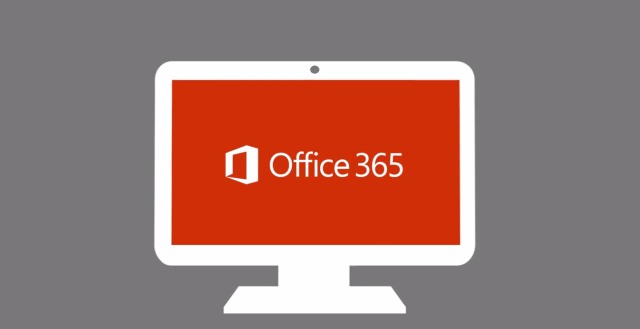
After announcing the subscription-based service in 2014, Microsoft has now made available three new Office 365 small/mid-size business plans to its existing business customers.
The three plans -- Office 365 Business Essentials, Office 365 Business and Office 365 Business Premium -- are replacing the current Office 365 Small Business, Small Business Premium and Midsize Business plans.
The earlier planned October 1 2015 release had been pushed back to 1 December, to allow users to move to Office 2016 "more seamlessly", according to Microsoft officials.
The Business Essentials plan includes email and calendaring, online meetings, instant messaging and Lync Online video conferencing, SharePoint Online, 1TB of free OneDrive for Business cloud storage, and Yammer enterprise social-networking support, at $5 per user per month, or $60 per year.
Office 365 Business includes the complete set of Office applications for up to 5 PCs and/or Macs per user, and 1TB of free OneDrive for Business cloud storage, for $8.25 per user per month, or $99 per year. However, it doesn’t include Exchange, Lync or SharePoint online.
Finally, the Business Premium plan combines the features of Office 365 Business Essentials and Office 365 Business for $12.50 per user per month, or $150 per year.
Visit the Office website for a full comparison of the three new plans.
Published under license from ITProPortal.com, a Net Communities Ltd Publication. All rights reserved.
-

Pebble doesn't see Apple Watch as a threat -- sales double year-over-year
Publié: novembre 6, 2015, 7:21pm CET par Phoebe Jennelyn Magdirila
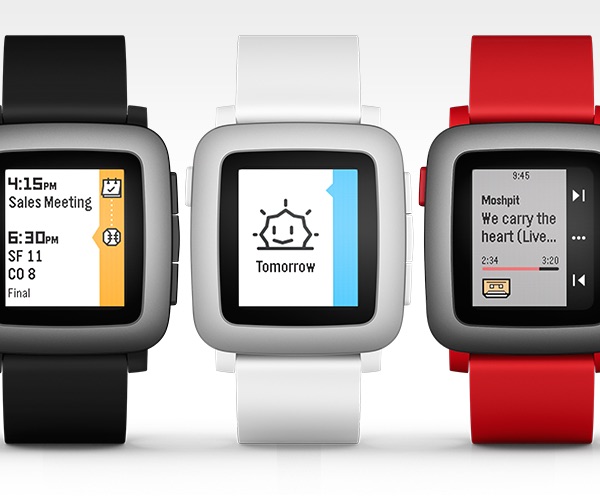
Pebble, one of the first tech firms that jumped into the smartwatch foray via a Kickstarter campaign, has been unaffected by the competition brought by the Apple Watch, says the company CEO Eric Migicovsky.
Migicovsky revealed that the company’s sales has improved, which experienced a double year-over-year growth. Apple Watch had "no material impact" on the company, Migicovsky claimed, adding that this is due to the difference in the market the companies tap.
He said that since Pebble targets the mass market, while Apple targets the high-end market and is focused on "being the Rolex or the Tag [Heuer]", the two smartwatch makers have no overlap.
"We are building something that’s fun, a little bit more colorful. It’s affordable. At the core, it’s just a different type of watch", Migicovsky explained. If there is something Apple has done, it is bringing "a ton of attention to this [smartwatch] space".
Pebble recently launched the Time, the company’s first wearable with color screens since it launched in 2012. Another wearables maker, Fitbit, also said that it is not affected by the presence of Apple Watch in the market also due to the different markets it taps.
The smartwatch market remains at its nascent stage, with only three percent of the adult US population owning one, recent research by Kantar Worldpanel ComTech revealed.
Such premise brings lot of potential for more smartwatch developers to enter the market in the future.
Published under license from ITProPortal.com, a Net Communities Ltd Publication. All rights reserved.
-

A new 4-inch iPhone is in the cards for 2016
Publié: novembre 5, 2015, 11:24am CET par Phoebe Jennelyn Magdirila
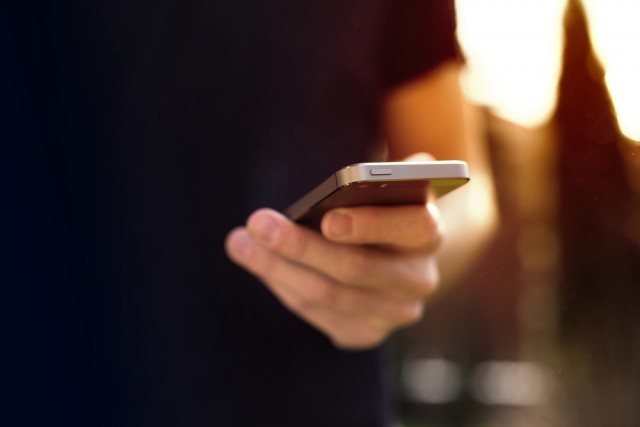
People who are already awaiting the 2016 Apple iPhones may see a new all-metal, four-inch device, along with the iPhone 7, according to an analyst from KGI Securities.
Ming-Chi Kuo said he believes that the tech giant is currently working on a four-inch iPhone that "resembles an upgraded iPhone 5s" with an A9 processor.
The analyst said that this move is due to the continuous demand for a four-inch phone and anticipates that the company could ship 20 million to 30 million units of the upcoming device. And to maintain its differentiation from the iPhone 6s and 6s Plus, the upcoming phone will not have 3D Touch functionality, Kuo added.
For the iPhone 7, the analyst expects that it will carry an upgraded A10 chip, for increased performance, while the RAM is expected to have the same 2GB that’s on the current iPhones, and an upgraded 3GB of RAM for the iPhone 7 Plus.
Kuo also expects Foxconn to be the exclusive supplier for the new four-inch iPhone and TSMC as the exclusive provider of the A9 and A10 chips of the new iPhones.
Kuo has correctly predicted the launch of 4.7-inch and 5.5-inch iPhones, the 12-inch MacBook, the size variants of the Apple Watch, and the hardware inside the iPhone 6s.
Published under license from ITProPortal.com, a Net Communities Ltd Publication. All rights reserved.
Photo credit: guteksk7 / Shutterstock
-

Sony to spin off semi-conductor business
Publié: octobre 7, 2015, 6:04pm CEST par Phoebe Jennelyn Magdirila
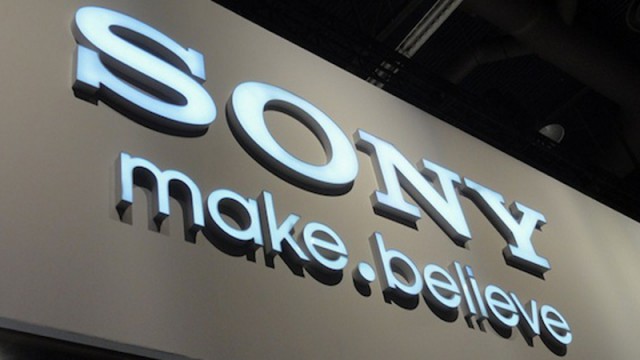
In an aim to grow its image sensors business, Sony Corp has said that it will be splitting off its semiconductors operations, the strongest business unit for the electronics maker.
In its announcement, Sony said it will be establishing Sony Semiconductor Solutions Corp and will begin operations in April 2016, a move that was part of the company’s undertaking to give autonomy to its business units in picking up speed in its decision-making and making it more accountable for its profitability.
Sony Semiconductor Corp and Sony LSI Design, which handle manufacturing and design for this portion of the business, will become subsidiaries of this new company.
The sensor business is popular among both camera and smartphone manufacturers. Sony’s sensors, used in smartphones such as Apple’s iPhone, have helped lead a turnaround at the company in the past year as its other business segments, such as its TV and smartphone units, struggled.
Sony said in April that it would spend 45 billion yen ($374 billion), on top of a 105 billion yen investment announced in February, to increase its sensor production capacity this fiscal year. The company also aims to expand its sensors into automobile-related products, which is seen to be a growing industry.
Published under license from ITProPortal.com, a Net Communities Ltd Publication. All rights reserved.
-

Tidal goes back in time as it starts to sell CDs
Publié: septembre 15, 2015, 11:46am CEST par Phoebe Jennelyn Magdirila

Music streaming service Tidal seems to be going back to the old school ways, as well as morphing into an e-commerce site as it has now started selling physical music formats (i.e. CDs).
Prince is selling his new album, HITNRUN PHASE ONE, exclusively on Tidal, both in physical format copies and through downloads on the site.
The rather unlikely move by Tidal, which is owned and controlled by rapper Jay Z and other celebrities, is a first for the streaming company and among other music streaming service providers.
It is, however, not clear whether Tidal’s move to sell CDs is a mere one-time offer to please Prince, or if it will be a long-time venture. Prior to this, the streaming company has also previously allowed musicians to include stores on the site, where artists could list merchandise such as T-shirts and posters.
Parallel to this move is an earlier statement by the musician and streaming site owner that "the Internet’s completely over".
Tidal has certainly had a rough start to its existence, with senior executives jumping ship and music professionals claiming the service will fold in less than a year.
Published under license from ITProPortal.com, a Net Communities Ltd Publication. All rights reserved.
Photo credit: Warut Chinsai / Shutterstock
-

Samsung Pay attracts 25,000 new users every day
Publié: septembre 11, 2015, 12:24am CEST par Phoebe Jennelyn Magdirila
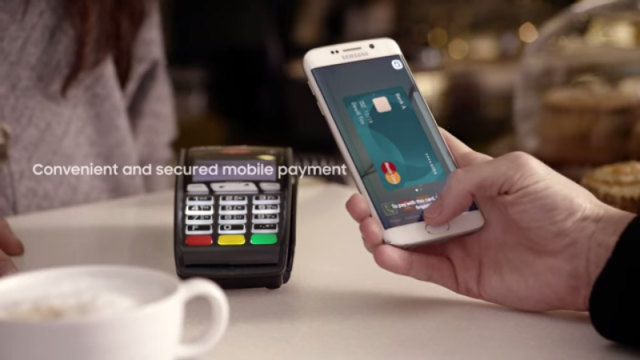
Following Samsung Pay’s launch in South Korea last month, the company is now seeing that an average of 25,000 people are signing up to use the service daily.
Samsung Electronics executive vice president and the development lead for Samsung Pay Injong Rhee, says that the payment platform’s usage has increased rapidly since its launch and is bringing in daily transaction volumes of KRW 750 million (~$630,000) on average.
During the open beta, the number of active users who made more than one payment with Samsung Pay represented 80 percent to 90 percent of all Samsung Pay users.
Samsung Pay is also in beta testing in the US and is set to formally launch on September 28. In addition, beta tests will also be conducted in other countries including the UK and Spain, Rhee says. Samsung has previously talked about expanding the payments service to countries across Europe as well as China later this year.
Samsung intends to provide the ability to make payments using credit cards, reward cards, department store cards, gift cards and store-brand cards -- which won’t work with conventional plastic debit cards -- as an incentive for people to use the payment service.
The company is also looking to provide other features in the future, including a location-based service.
Published under license from ITProPortal.com, a Net Communities Ltd Publication. All rights reserved.
-

IFA 2015: Huawei announces new Mate S flagship smartphone
Publié: septembre 4, 2015, 4:31pm CEST par Phoebe Jennelyn Magdirila
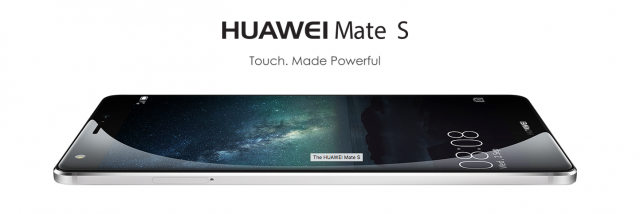
Focusing on touch technologies, the now-third largest smartphone supplier Huawei has unveiled its new 5.5-inch handset at IFA in Berlin.
The Huawei Mate S, the maker’s new flagship smartphone, features some impressive touch-based innovations.
The first of which is the Fingerprint Sense 2.0 touch sensor, which sits on the rear of the handset to facilitate one-handed operation whether for answering calls or taking selfies.
It also carries Knuckle Sense, first seen on the Huawei P8, which can tell the difference between different parts of your finger, letting users launch apps by swiping or "knuckling" letters to open apps.
Force Touch technology, which is available in the 128 GB model, helps distinguish between a tap, swipe or forceful press on the screen.
The Mate S features a dual diamond-cut all-metal metal body, which measures 2.65mm at its thinnest point. It has a Full HD Gorilla Glass 4-fronted display, water-resistant nano-coating and a 3-microphone directional listening.
The device also boasts a 13-megapixel rear camera, with optical image stabilization and a sapphire-protected lens, and an 8-megapixel front camera, with a "soft lighting" flash and a "beautify algorithm" feature.
The Mate S will be available in versions with 32GB and 64GB, at €649 and €699, respectively. There is no word yet on availability of the 128GB Force Touch model.
https://youtu.be/i7pLyruHJDQ
Published under license from ITProPortal.com, a Net Communities Ltd Publication. All rights reserved.
-

Tidal might be history in less than a year
Publié: août 28, 2015, 7:24pm CEST par Phoebe Jennelyn Magdirila
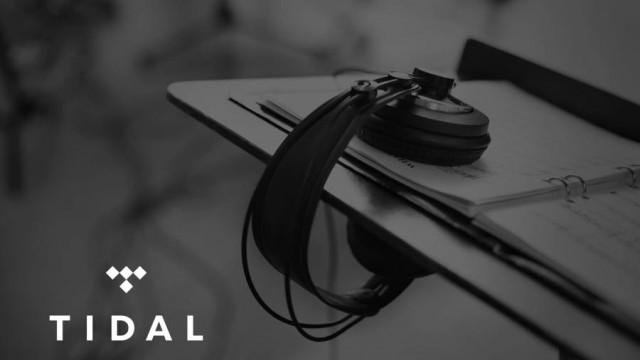
Seventy-one percent of top music executives believe that Jay Z’s music streaming service Tidal will fold in a year or less.
Following Jay Z’s acquisition of the streaming platform in March for $56 million (£36 million), the company’s valuation spiked to a reported $250 million (£162 million) just a month after.
Jay Z has branded Tidal as an artists’ platform and a huge roster of artists have joined him in this goal, including big names like Coldplay, Daft Punk, Alicia Keys, Calvin Harris, Madonna, Usher, and Rihanna.
However, it has experienced several road bumps along the way, as traction wasn’t easy for the company.
People did not seem to care about the platform’s high-fidelity audio, which was one of the main selling points of the service. On top of that, Tidal’s monthly subscription of $20 has been deemed expensive compared to its counterparts Spotify and Apple Music, which were only charging $10.
The company has also seen a number of executives leave, including former CEO Andy Chen, who oversaw the acquisition, leaving a few weeks after it was sold. Peter Tonstad, who replaced Chen only lasted until June. Tidal’s US sales and marketing manager David Solomon, and senior vice president of label and artist relations Zena Burns, both quit, with the latter only serving two months at the company.
The Billboard survey anonymously polled more than 50 top music executives on their outlook on Tidal.
Apart from the majority who thinks Tidal will be down in a year’s time, 17 percent thought it would survive for one to two years, and only 12 percent thought it would be part of the industry for the long haul.
Published under license from ITProPortal.com, a Net Communities Ltd Publication. All rights reserved.
-

Half of all Internet users are on Facebook
Publié: juillet 31, 2015, 2:32pm CEST par Phoebe Jennelyn Magdirila
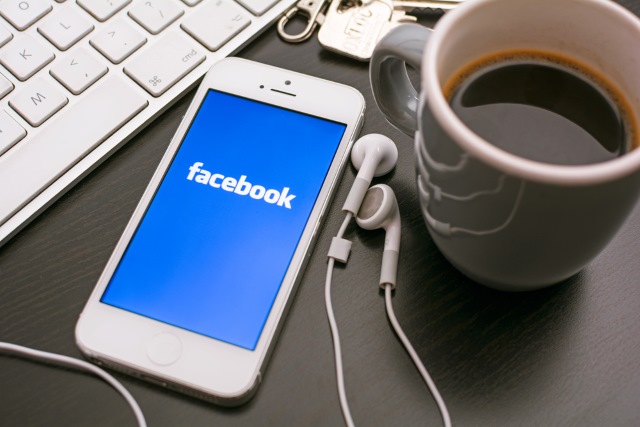
Approximately half of the world’s online population accesses Facebook on a monthly basis, the social media giant has reported.
By the end of Q2 2015, 1.49 billion people accessed the website at least once in a month, up 13 percent from the same period last year and representing half of the estimated global online population of 3 billion, Facebook said.
The majority of these monthly users access the social network through mobile devices. The number of mobile monthly active users increased 23 percent year-on-year to 1.31 billion during the quarter that ended 30 June.
Meanwhile, daily active users is at an average of 968 million, representing an increase of 17 percent compared to the previous year. Of this number, the number of mobile daily active users stands at 844 million which represents a 29 percent year-on-year increase.
The increase in Facebook’s monthly and daily active users seemed to be brought about by the social media giant’s increase in user base to 1.44 billion -- greater than the population of China -- during the end of the first quarter.
The increase also equated to a boost in advertising revenues for the company as it reported total revenues of $4.04 billion (£2.59 billion) for the second quarter, which is up 39 percent from the previous year. Mobile advertising revenue represented about 76 percent for the second quarter, up from about 62 percent in the second quarter of 2014.
Facebook’s net income, after adjusting for one-time items, increased 28 percent to $1.44 billion. And by the end of the quarter, Facebook had $14.13 billion of cash and cash equivalents and marketable securities at hand.
Published under license from ITProPortal.com, a Net Communities Ltd Publication. All rights reserved.
Photo credit: Twin Design / Shutterstock
-

Sony unveils PlayStation 4 remote
Publié: juillet 24, 2015, 11:04am CEST par Phoebe Jennelyn Magdirila
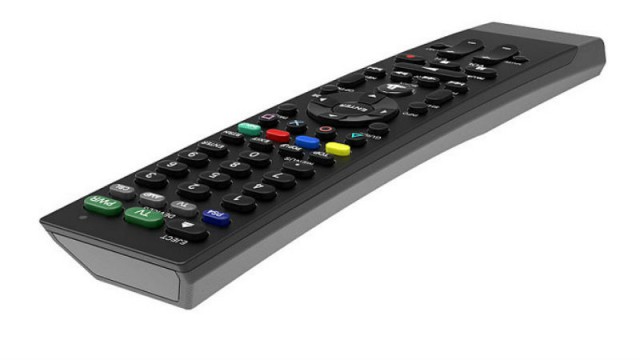
Sony is set to release an officially-licensed remote control for the PlayStation 4 in the fall, which is intended to provide easy navigation and media playback functionality.
The PlayStation’s remote will work through Bluetooth and will allow the user to control up to four devices including the PS4, TV, set top box and audio receiver.
The remote will also have specific buttons for PS4 Home and Power.
Produced by hardware maker PDP, the remote will go on sale in the US from October 31 for $30, while, at the moment, UK pricing and availability is unknown.
Despite the availability of other controllers, the PlayStation remote is the first to be officially endorsed by Sony. However, the company has previously produced its own media/Blue-ray disc remote for the PS3, which was also compatible with Sony amplifiers.
The company has also recently announced the launch of its video game streaming platform, PlayStation Now, in the UK and signaled its intention to delve into the world of drones with a new winged machine.
Published under license from ITProPortal.com, a Net Communities Ltd Publication. All rights reserved.
-

Microsoft WearDrive can triple battery life for wearables
Publié: juillet 15, 2015, 6:32pm CEST par Phoebe Jennelyn Magdirila
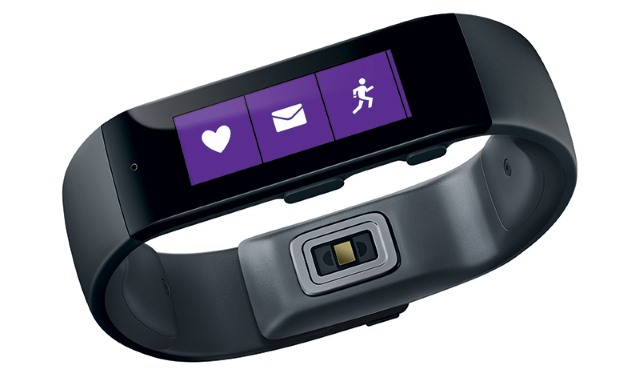
Microsoft Research expects to almost triple the battery life of wearables through a technology called WearDrive which uses the aid of a smartphone.
The idea of the technology is to use the battery of the user’s smartphone to allow the wearable to handle high-battery consumption tasks, while also keeping the device on for a longer period of time.
To do this, WearDrive will offload energy intensive tasks via Bluetooth or Wi-Fi onto the user’s smartphone, while the lightweight tasks will remain to be handled by the smartwatch.
The planned technology expects to improve battery life "up to 3.69 times with negligible impact to the phone’s battery life" and "improve the performance of wearable applications by up to 8.85 times", according to the Microsoft Research paper.
The tripled battery life can be compared to a wearable with a bright LCD which lasts two days, to one that can go for five to six days.
As long as the wearable is paired to a smartphone, the system can be switched on and off. Furthermore, WearDrive wouldn’t be useless without a smartphone, but the wearable would essentially run out of juice quicker.
The tech is not being used on the Microsoft Band and, at the moment, the company has not announced plans to do so for the second generation tracker.
Published under license from ITProPortal.com, a Net Communities Ltd Publication. All rights reserved.
-

Apple Watch is too expensive for most consumers
Publié: juillet 13, 2015, 9:01am CEST par Phoebe Jennelyn Magdirila
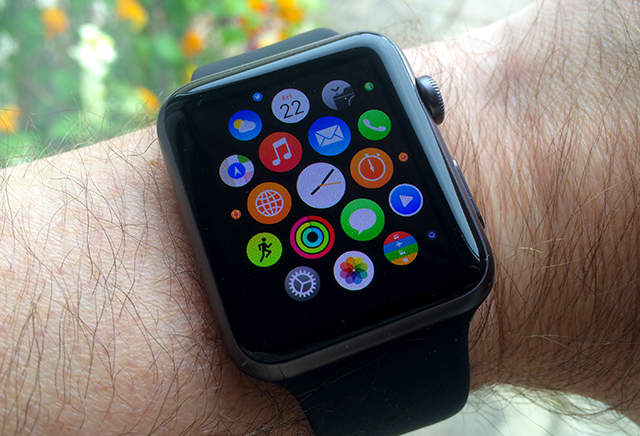
One in ten US broadband households plan to buy a smartwatch in 2015, however, 84 percent of them won’t spend over $250 on the device, according to recent wearable research.
The survey, from Parks Associates, suggests that the price point of $100 (£65) to $250 (£160) is roughly equivalent to a high-end fitness tracker.
In addition, the study reveals that those who are willing to spend more than $500 (£320) on a smartwatch will only buy one if it works without a smartphone.
This is bad news for Apple as it means that not everyone will likely to purchase an Apple Watch, because of its current tethered setup and most especially because of its price tag, which begins at $349 (£225).
Based on these results, it seems likely that cheaper smartwatch makers will come out on top in terms of US sales this year as most people are expected to opt for devices at lower price points such as the Pebble Time or Motorola Moto 360.
"Fitness applications are the most popular use cases for smartwatches", Park Associates health and mobile product research director Jennifer Kent said. "But music and weather applications are also popular, showing consumers value the multi-functional quality of the smart watch".
Published under license from ITProPortal.com, a Net Communities Ltd Publication. All rights reserved.
Photo Credit: Wayne Williams
-

Windows 2003 gets a proper send-off, launching into space
Publié: juillet 9, 2015, 5:08pm CEST par Phoebe Jennelyn Magdirila

In a tribute to Windows Server 2003, which reaches its end of life on July 14, disaster recovery provider Databarracks, together with the University of Surrey’s Electronics and Amateur Radio Society, launched a Windows 2003 disk into space.
Based on mass and the weather conditions on the day, the team predicts the balloon carrying the disk reached an altitude of 100,000 feet -- compared to the altitude of 30,000 to 40,000 feet for most commercial aircrafts -- before bursting and traveling back down to Earth.
"Windows Server 2003 has been such a reliable workhorse for organizations for the last decade. The unparalleled levels of stability it has offered have earned it a special place in the hearts of IT managers worldwide -- ours included", said Databarracks Managing Director Peter Groucutt.
"There’s almost a feeling of nostalgia when we think about Server 2003 reaching end of life. For us as a company especially -- we were founded in 2003 and so Win2k3 has been integral to us from the start. We wanted to give it a fitting send off".
Despite support reaching end of life, 61 percent of businesses were still reliant on Windows Server 2003 by the end of 2014, research from the Cloud Industry Forum suggests. A further study by Bit9 predicts 2.7 million Win2k3 servers will remain deployed post end-of-life.
Given this premise, Databarracks Technical Operations Manager Oscar Arean warns that: "Continuing to run an unsupported operating system after end-of-life will leave you open to vulnerabilities. In addition, applications will no longer be supported by vendors on server 2003. While they may work fine for a while, if you do have an issue, the vendor won’t be able to help".
Published under license from ITProPortal.com, a Net Communities Ltd Publication. All rights reserved.
Photo Credit: Markus Gann/Shutterstock
-

Siri knows what makes Cookie Monster sad
Publié: juillet 1, 2015, 3:37pm CEST par Phoebe Jennelyn Magdirila

Siri has become known for providing amusing answers to certain questions and today a new one has taken the internet by storm.
When asked the question "What is zero divided by zero?", Siri responds in a witty yet comical manner, citing Cookie Monster’s cookies as an example.
The voice assistant tells the Apple device owner that the sum doesn’t make sense and states: "Imagine that you have zero cookies and you split them evenly among zero friends. See? It doesn’t make sense".
It adds: "And Cookie Monster is sad that there are no cookies, and you are sad that you have no friends".
The hilarious Cookie Monster zero by zero response even caught the attention of Breaking Bad star Aaron Paul as he tweeted the Siri Easter Egg to his 2.5 million followers earlier today and was trending on Twitter.
Ask Siri "what is zero divided by zero?" RIGHT. NOW.
— Aaron Paul (@aaronpaul_8) June 30, 2015
Another prime example of Siri’s wit comes when asked to reveal when the world will end. The response: "I don’t know, but I wouldn’t worry about it... there are other perfectly good universes".
Published under license from ITProPortal.com, a Net Communities Ltd Publication. All rights reserved.
-

The first 3D-printed supercar can reach 60 mph in 2.2 seconds
Publié: juin 30, 2015, 7:36pm CEST par Phoebe Jennelyn Magdirila

A San Francisco-based firm has become the first company to create a 3D printed supercar, which can go from zero to 60 miles per hour in 2.2 seconds.
The Blade, created by Divergent Microfactories, was developed using a series of chassis parts held together by carbon rods, instead of coming out as a single unit, and was put together like a Lego set.
The Blade only weighs 1,400 pounds and is made out of carbon fiber. But in addition, Divergent had said that the method also helped to reduce the weight of the chassis by as much as 90 percent.
Despite its light weight, the supercar features a 700HP engine capable of running on both CNG and gas.
More than being just a game changer in the production of vehicles, Divergent also said that 3D printing reduces pollution, materials and capital costs associated with building automobiles and other structures.
"Society has made great strides in its awareness and adoption of cleaner and greener cars", said Divergent Microfactories CEO Kevin Czinger. "The problem is that while these cars do now exist, the actual manufacturing of them is anything but environmentally friendly".
Divergent intends to sell a limited number of high-performance vehicles, which it hopes will encourage others to set up microfactories to 3D print their own low-cost vehicles.
Check out the video below to learn more about how the Blade was made.
Published under license from ITProPortal.com, a Net Communities Ltd Publication. All rights reserved.
-

Astronauts complaining about slower than dial-up Internet
Publié: juin 16, 2015, 12:32pm CEST par Phoebe Jennelyn Magdirila

NASA first provided Internet access to astronauts in space five years ago, but these space guys have revealed that connection speeds from the International Space Stations are worse than the old-school dial-up connection.
A click on a webpage from a space station first travels 22,000 miles away from Earth, to a network of geosynchronous satellites far beyond the relatively close station. These satellites then send the signal down to a receiver on Earth, which processes the request before returning the response along the same path.
The engineers on the ground are the ones who have access to providing astronauts with Internet access, the same channels that are used for all kinds of commands to the space station.
But while the time it takes to transmit data is relatively slow to Earth’s standards, the capacity for data transmission is robust.
NASA spokesman Dan Huot said: "We have the capability to send up and down large-format video files. We’re sending gigs and gigs and gigs of video every single day just from live downlinks of the crews themselves".
The astronauts can do this through devices provisioned in the space stations. NASA spokesperson David Steitz told Mashable that "they have laptop computers, including one in their personal sleeping quarters, which they can use for limited web access -- email, tweeting, and news".
"They also have tablets onboard they can use for various operational tasks, but also video conferences with family and friends on the ground".
Published under license from ITProPortal.com, a Net Communities Ltd Publication. All rights reserved.
Photo Credit: NASA
-

IBM set to deploy Macs for its staff -- will employees give up PCs?
Publié: juin 1, 2015, 5:11pm CEST par Phoebe Jennelyn Magdirila
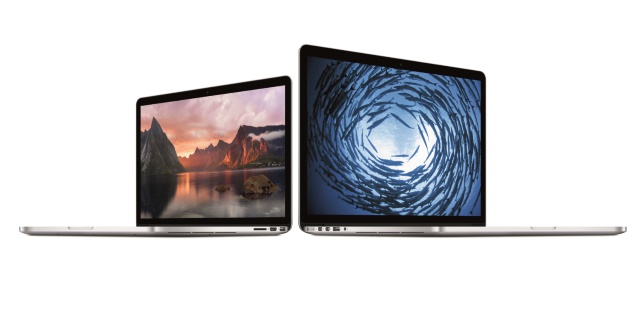
Staff at tech giant IBM are set to use Apple Mac machines following the company’s one-year partnership with Apple for the creation of business-centric apps for the iOS.
IBM employees will be given the option to choose between a MacBook Pro, MacBook Air or traditional PC for their new workstations and will be part of the company’s choose your own device policy, according to the company’s recent memo.
Numerous IBM employees also took to Twitter to share this exciting news.
This option of choosing Mac computers is a first for the company. Nonetheless, IBM had previously provisioned around 15,000 Apple computers across its organizations under a bring-your-own-device scheme and the new offering of corporate-provided Macs for employees is just expected to further the number of BYOD workers to 50,000 in 2015.
This move and the Apple-IBM partnership is expected to be a challenge for Microsoft, which has experienced a slide in dominance in its enterprises offerings. This has previously been led by the sales of IBM’s Windows-based laptops under Lenovo’s ThinkPad range.
This has left Microsoft having to place all its eggs in one basket with its upcoming Windows 10 release.
Meanwhile, Apple has unveiled a refreshed line-up of its Mac portfolio, which are geared with improved specs at reduced prices from its existing offerings.
Published under license from ITProPortal.com, a Net Communities Ltd Publication. All rights reserved.
-

Smartwatch sales set to boom over the next five years
Publié: mai 13, 2015, 1:39pm CEST par Phoebe Jennelyn Magdirila
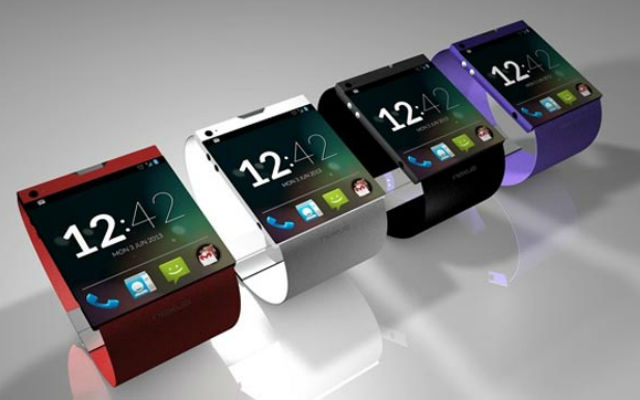
The smartwatch frenzy has just started and is expected to continue to boom in the next five years.
According to a new analyst report by research firm IHS Technology, the 3.6 million smartwatch shipments in 2014 will grow to 101 million in 2020.
Additionally, the report said that the smartwatch to smartphone shipment ratio will narrow down from the current 1:500 to 1:20 in 2020.
The smartwatch will become a key accessory device offered by most leading smartphone manufacturer, IHS analyst Antonios Marouli said.
The huge driver for its sales will be the availability of a wide range of apps. "Apple’s and Google’s success with existing smartphone application stores will give them an invaluable head start over challengers," Marouli adds.
While Apple’s marketing efforts will push for consumer awareness, its higher price value will give a huge market for other lower-priced wearable makers.
However, while other proprietary OS platforms will find short-term successes, standard platforms that are supported by most hardware will still dominate -- which will most likely be Apple and Google.
IHS cites that Apple Watch sales are expected to hit 19 million this year alone. And in terms of Android wear adoption, 96 million units are expected to be sold in the next five years
Published under license from ITProPortal.com, a Net Communities Ltd Publication. All rights reserved.
-

How to set up a passcode on iOS and Android
Publié: avril 29, 2015, 9:33am CEST par Phoebe Jennelyn Magdirila
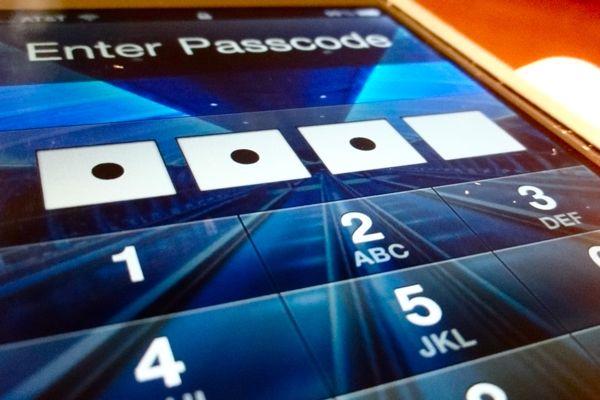
There was a time when phones only contained text messages and contacts that the value of your device had been more important than what it stores. But that period is now long gone. In today’s age of smartphones, information has become more valuable than the device itself, which is why having a PIN on your smartphone has become more important than ever.
Tons of information -- such as your social media accounts, email messages and bank details -- can be accessed from your phone and we all know that security is not something to be ignored in this day and age. Setting up a passcode is an easy task on both Android and iOS smartphones and here’s how it’s done.
On Android
Android users have three lock options for their smartphones: the four-digit code, the unlock pattern and the alphanumeric password.
To set up any of these follow the steps below;
- Go to the Settings menu and locate the Lock Screen option.
- Choose which pass code style you want to have, then set the desired code or pattern.
- For the unlock pattern, you have to connect at least four dots for the pattern to be approved.
- Following your selection, the code or pattern will have to be entered twice for accuracy.
On iOS
Sorry iOS users, there’s no pattern option available for you so you’ll have to stick to the trusty code. Here’s how to set it up:
- Go to the Settings tab, click Passcode and select Turn Passcode On.
- Enter your 4-digit code (make sure it’s one you will remember)
- Along with setting up your passcode, it is also a good idea to set an autolock time for your device, which can be done in Settings > General > Auto-Lock.
Published under license from ITProPortal.com, a Net Communities Ltd Publication. All rights reserved.
-

7 ways to maximize your Android and Apple contacts
Publié: mars 3, 2015, 7:35pm CET par Phoebe Jennelyn Magdirila
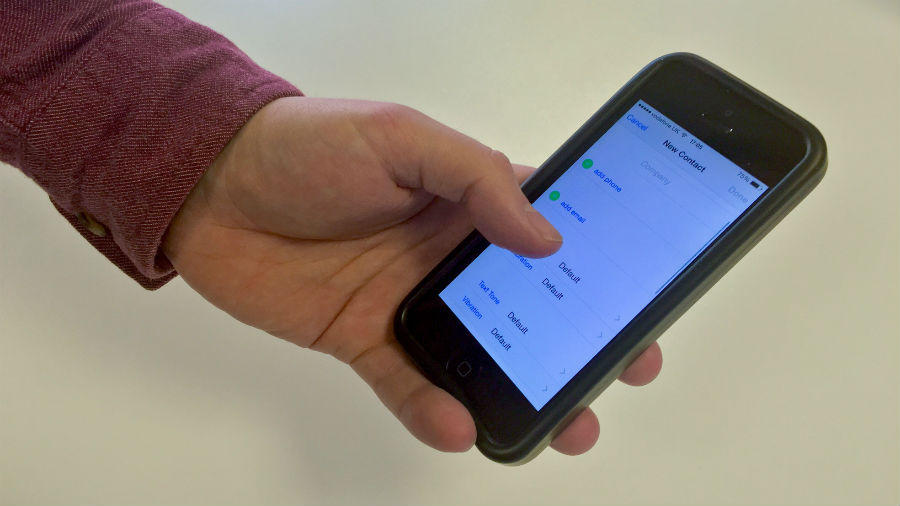
I’m sure you all know that your smartphone contacts app has long been essential for storing contact information, but while storage is its typical use, Android and Apple devices contacts are not limited to that function.
There are several nifty tricks you can use to lever the full potential of your contacts list. Here are seven of the best.
Android and iOS: Give a friend a unique name
So, maybe you’ve put your dad’s actual first and last name into your address book, but you’d like to simply tell Siri or Google Now to "call dad" when you want to give him a ring. Both Android and iOS solve that problem by providing an optional nickname field in the contacts app.
Simply open the desired contact card and click the 'Edit' option, select 'Add field' (or 'Add another field' for Google) and input the nickname.
The next time you make a voice command, you can simply use your contact’s nickname instead of the actual name originally saved on your address book.
Android and iOS: Improve Siri and Google Now pronunciations
It could easily become annoying whenever Siri or Google Now mispronounces a name and just does it every single time. Flaw as it may seem, this is now compensated for by the phonetics option.
This feature does not include using complex characters but can be used for most names. Say, if your voice command mispronounces Carlisle, you can input "Carlyle" into the phonetic field instead.
Doing so should be like that of adding a nickname. Click the 'Edit' button then under the add field, select 'Phonetic name' for Android, and either 'Phonetic first name', 'Phonetic middle name', or 'Phonetic last name', for iOS.
Android: Pin a contact
Yes, Android can let you pin a contact into your phone’s home screen -- outside the contacts app.
It’s a cool way to by-pass the process of skimming through your long list of contacts every time you need to call your boss or your best friend. Once the contact is pinned into your home screen, the contact’s icon will appear and the contact details will pop-up with a single tap.
From there you can easily send your text message or make your call.
To do this, select the contact you want to pin to your home screen and choose 'Place on Homescreen' under the list of options.
Android and iOS: Create a reminder of a special event
Occasions like your sister’s wedding, your parents’ anniversary or a friend’s birthday, are events that you wouldn’t want to miss and an Android and iOS contacts feature can help you with the tons of special dates that you need to remember.
Follow the same steps in adding a new contact, then on your iOS device look for a field that says 'Add date' or 'Add birthday', select the appropriate option and add the date.
Android uses the same process, only that it is much more lenient with the labels -- after selecting the add field button, just tap 'special dates', add the special occasion and label it with whatever event you’re attending.
Both the Android and iOS automatically provide prompts for these dates through the calendar app.
Android and iOS: Assign a distinct ringtone to a contact
Your smartphone won’t be in your hands 24/7, however, you may want to quickly know that it’s your boss calling and not someone you can ignore.
To be alerted when a specific contact calls, why not create a special ringtone for that person?
Under the contact card, select 'set ringtone' for Android and 'ringtone' for iOS and choose your desired ringtone for that specific contact.
iOS: Create a custom vibration
On top of the custom ringtone, iOS also ensures that you can distinguish a caller as your phone vibrates, which is especially useful when your smartphone is in silent mode.
The 'vibration' function, which also appears under the 'Edit' option, lets a user create a vibration pattern by just tapping and swiping the screen. Once the pattern has been created, a user can either save and assign the vibration for a contact, or select 'record' to re-do the pattern.
Android and iOS: Avoid annoying contacts
Whilst, in most cases, you would happily rummage through your bag to pick up a call from your best friend, there will be times when you’d want not to take a call from a particular person. This is a problem that’s easy to solve, thanks to the block functionality.
For contacts in iOS, the 'block this caller' option can be found at the bottom part of the contacts card. For Android, selecting the 'all calls to voicemail' option will do the trick.
Published under license from ITProPortal.com, a Net Communities Ltd Publication. All rights reserved.